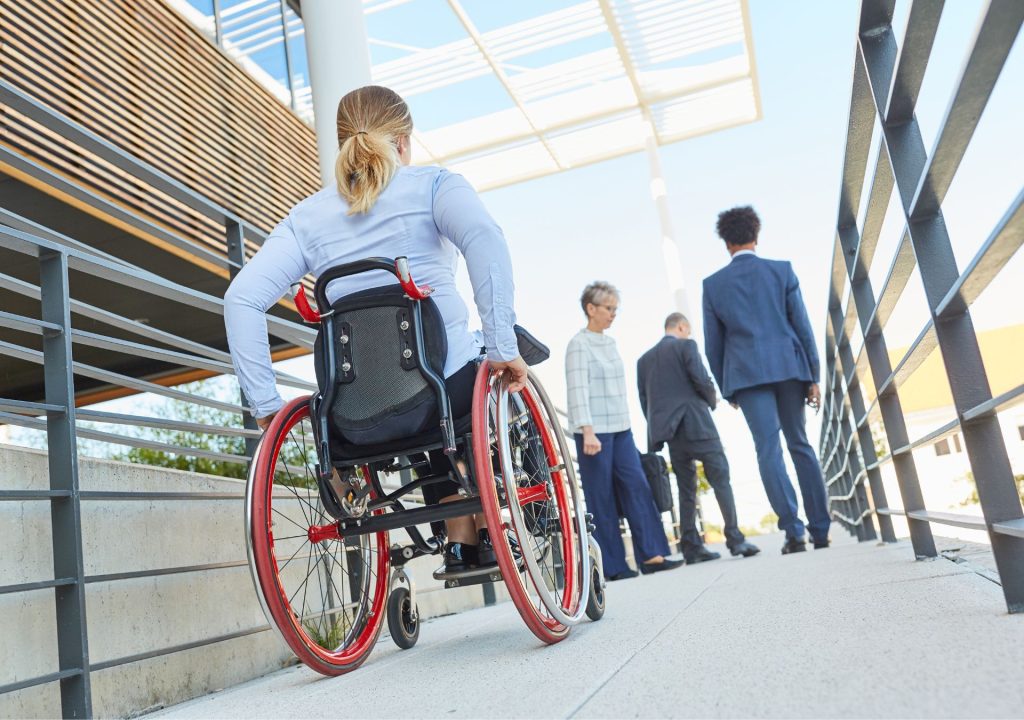Green Open Space Audits

Accessibility in Parks & Green Spaces
Ensuring that outdoor spaces are accessible for all individuals, regardless of their abilities, can greatly enhance the overall experience and inclusiveness of parks and green spaces. By providing accessible pathways, ramps, and seating areas, individuals with disabilities or mobility challenges and their caregivers can enjoy the beauty and tranquillity of parks just like anyone else.
However, accessibility in parks goes beyond just creating physical infrastructure. It also involves considering the needs of individuals with sensory disabilities, such as visual impairments or hearing impairments. For example, having audio-described signage or tactile maps for visually impaired individuals to navigate through the park independently.
Prioritising accessibility in parks and green spaces is crucial because it promotes equality and gives everyone an opportunity to enjoy nature’s beauty. It allows people with disabilities to engage in outdoor activities as well as connect with their communities on equal grounds. Designing inclusive environments fosters empathy among visitors by raising awareness about different abilities and challenging societal norms regarding participation in recreational activities outdoors. By creating accessible parks and green spaces that cater to varying needs, we embrace diversity while enriching the quality of life for all individuals within our communities.


Accessibility in the space surrounding business premises
Ensuring accessibility in the space surrounding business premises is crucial for fostering inclusivity and equality. The exterior of a business sets the tone for its values and commitment to serving customers from all walks of life. When businesses prioritise accessibility, they send a powerful message that everyone is welcome and can access their goods and services.
Not only does accessible space benefit people with disabilities, but it also benefits parents with strollers, elderly individuals, and those with temporary mobility issues. By providing ramps or lifts, wider pathways, and designated parking spaces, businesses create an environment that accommodates everyone’s needs. Making these modifications can attract a larger customer base by tapping into an underserved market segment.
What Is Covered In An Open Space Audit?
Our comprehensive open space audit will thoroughly assess various aspects to determine the overall accessibility of your premises including:
- Approach and car parking access: We will carefully examine whether there are sufficient disabled parking spaces available and if they meet the required standards, such as being wide enough to accommodate wheelchair users comfortably.
Our accessible spaces consultants will evaluate the proximity of these designated parking spaces to the main entrance, ensuring that individuals with mobility limitations have convenient access. Additionally, we will scrutinise the condition of walkways leading from the parking area to entrances, checking for any obstacles or uneven surfaces that could potentially hinder safe passage.
- External level changes: Our accessible spaces consultants will conduct a thorough audit to determine the accessibility of external level changes for individuals with mobility issues. This evaluation will encompass various aspects, including ramps, pathways, and entrances/exits. We will meticulously examine whether these exterior modifications meet the required accessibility standards and guidelines.
During their evaluation, the consultant will consider factors such as incline gradients of ramps, obstacle-free pathways, and the presence of handrails or guardrails for support. They will also assess the condition of these modifications to ensure they are well-maintained and free from any potential hazards or obstructions that could impede movement.
Building entrances/exits: Our accessible spaces consultants will conduct a comprehensive audit of your building’s entrances and exits, paying close attention to various factors. Firstly, we will evaluate the width of the entrances and exits to ensure they meet accessibility standards. This involves considering the space available for wheelchair users or individuals with mobility aids to navigate comfortably.
In addition to assessing width, we will inspect whether ramps are present and if they comply with regulations. We will also examine door functioning mechanisms, such as push buttons placed at reachable heights or sensor-activated doors that enable easy entry and exit for people with disabilities.
Beyond these essential elements, we understand the importance of evaluating other aspects related to accessibility in your facility. Our report may cover features like adequate signage indicating accessible routes, appropriate handrails for stability along staircases or ramps, properly designed curb cuts for smooth pathway transitions, and suitable flooring surfaces that do not pose tripping hazards.
- Signage and way-finding: Our accessible spaces consultants will conduct a detailed audit of signage and way-finding surrounding the premises. We will determine if signs are easily readable, placed at appropriate heights, and comply with accessibility guidelines by incorporating features such as raised characters and Braille. Additionally, we will assess if audio guides or other aids are available to assist individuals with visual impairments in navigating the facility.
Arrange An Open Space Audit
We offer accessibility and open space audits for venue owners and public building managers.